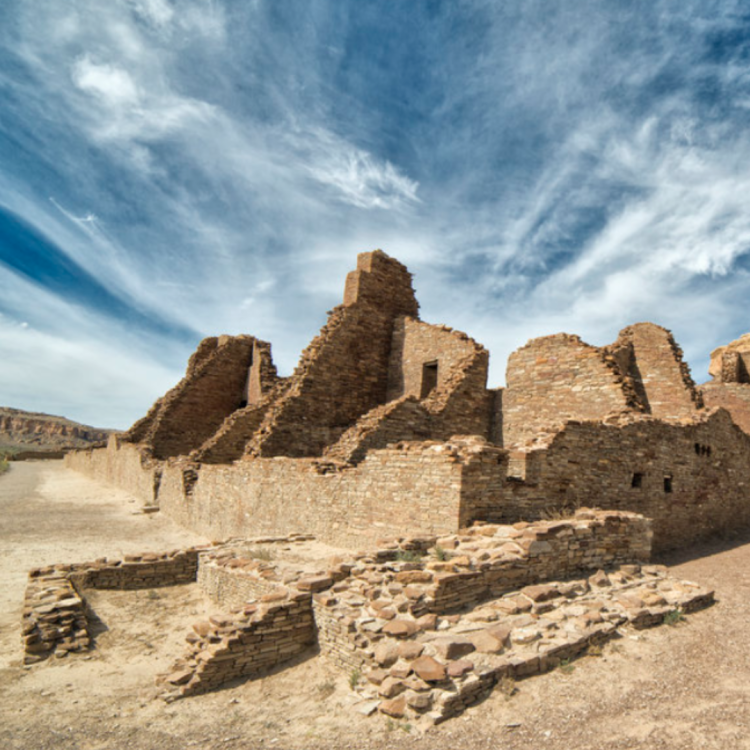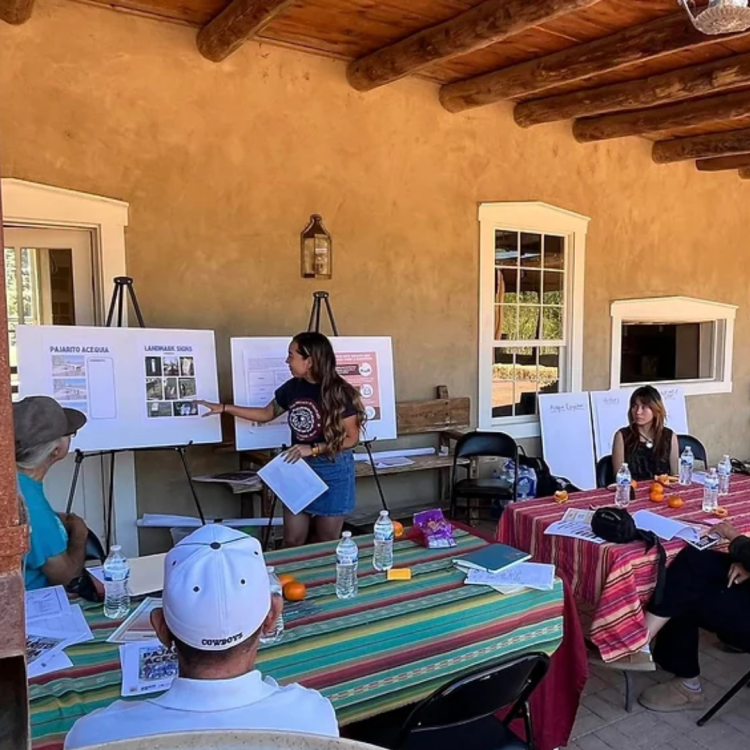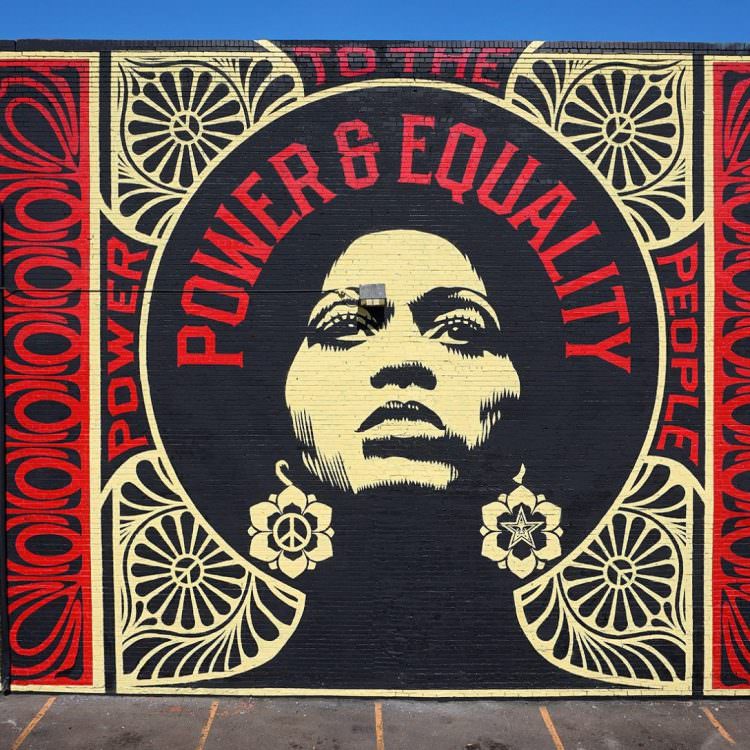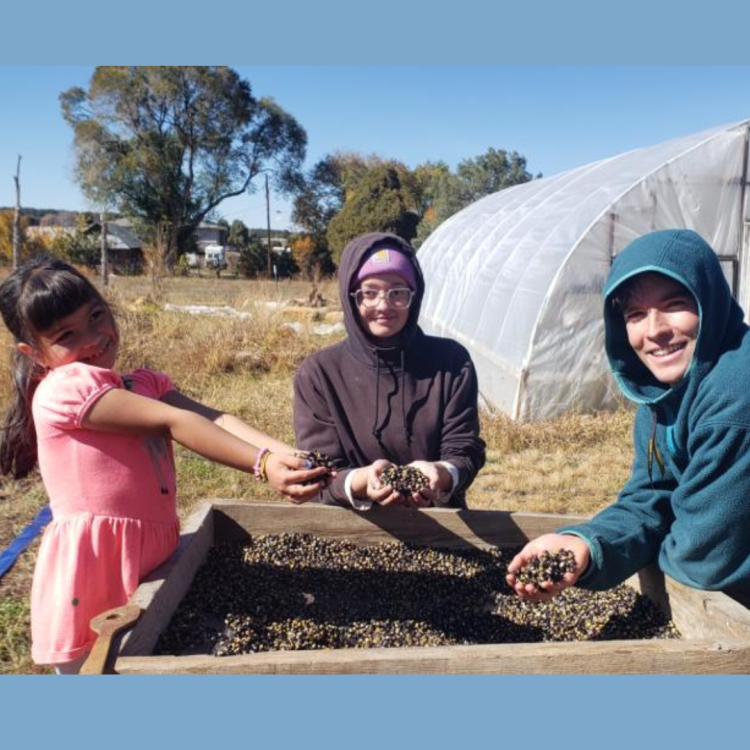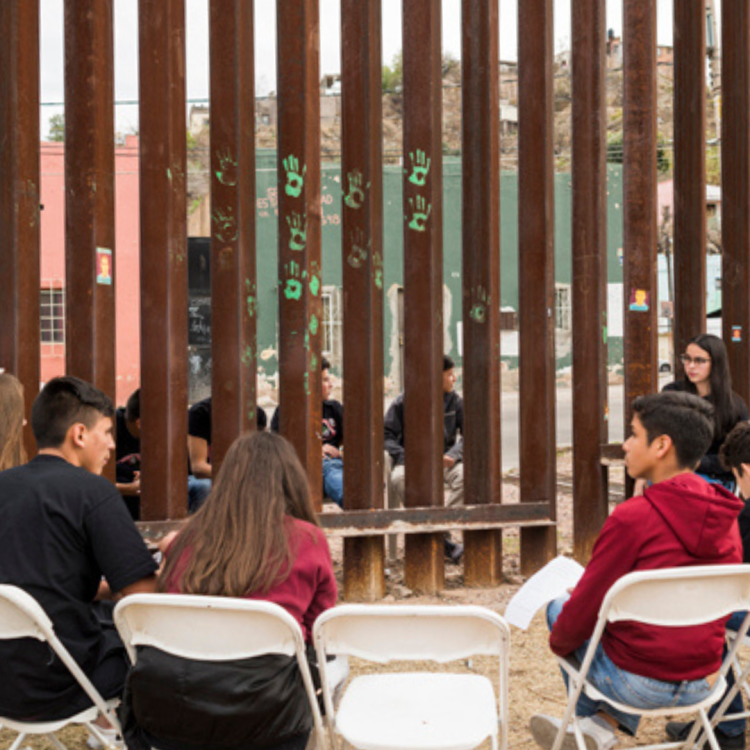2024 AFS Annual Meeting Theme: Crossing the Global Storm: Networks, Solidarities, and Communities in Struggle
*** Texto bilingüe en español disponible a continuación, para acceder más rápido haz clic aquí ***
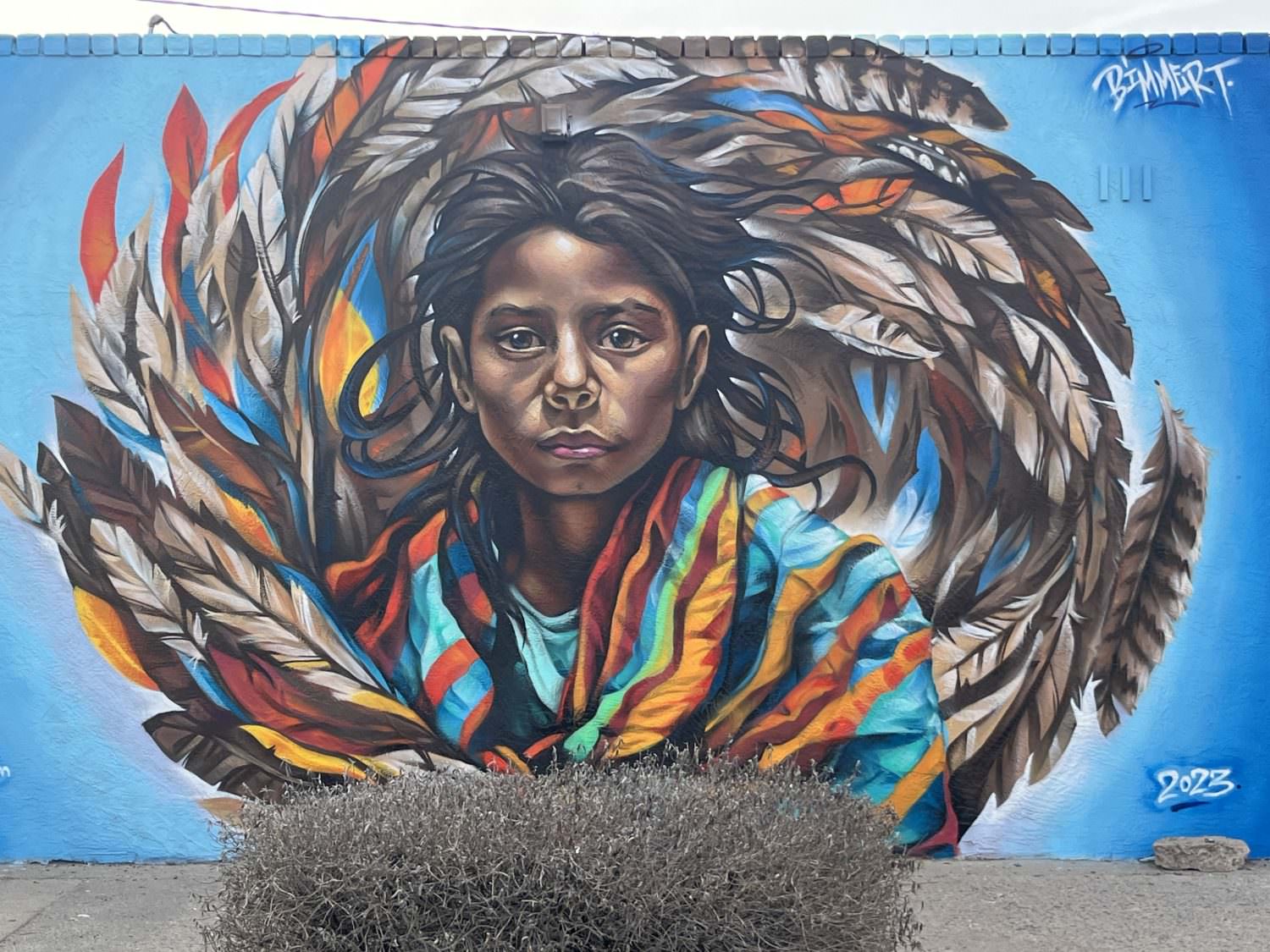
At the onset of 2024, the Zapatista National Liberation Army (the Zapatistas) met to celebrate the 30th anniversary of their fight for life, dignity, and self-governance, in the setting where their struggle started: the Lacandon jungle in Mexico’s southeastern state of Chiapas. They announced emerging strategies and plans for crossing and surviving the “Global Storm,” or what they call the chaotic effects of late capitalism and colonialism in its newest forms (Deslandes 2024).
Foreseeing the destruction to come, the Zapatistas denounced the “Storm” in a series of communiques as causing unprecedented global migration and climate change. This storm continues to produce devastation across the planet including in the form of war, social chaos, and structural state violence.
Inspired by the Zapatistas and the 2023 Gathering of the Sexta Grietas del Norte network that took place in Albuquerque, New Mexico, Crossing the Global Storm aims to bring together folklorists, culture bearers, communities, culture workers, and organizations in the struggle to build autonomy, commitment, and collaboration. The ongoing destruction of the planet and the dehumanization of people urges us to center folklore practice in building bridges and networks.
The long struggle towards emancipation from colonial power in the Americas has generated 500 years of knowledge and wisdom. Generations have developed practices of rebellion, preservation, dissent, and community building. From Mexico to the United States, and around the globe, communities have reused and created cultural strategies that respond to local conditions, actively nurturing their traditions, values, and imaginations.
In this conference, we ask participants to consider: What is the storm in your local geography? How is the storm impacting the environment around you and shaping the lives of your community? How are people responding to these storms? How does the folklore field – and adjacent fields – recognize and understand the diverse viewpoints for ways to weather a storm, considering collective action and coalition building as mechanisms for community empowerment? In the gathering, we hope participants will offer their assessment of the storm and create points of connection across place, time, and folklore practices.
New Mexico, and the Southwest and U.S.-Mexico borderlands in general, is a critical location from which to consider the consequences of and resistance to the unprecedented extraction and exploitation of the earth and its most vulnerable inhabitants. As Chicanx anthropologists Aimee Villarreal and Dabi F. García masterfully articulate about their home state:
“New Mexico is a space-time vortex where ancestral Puebloan ceremonial centers reside in the shadow of Los Alamos National Laboratories. Adobe dwellings and pastoral landscapes form the backdrop for sci-fantasies, alien crash landings, and a bankrupt spaceport in the desert…This so-called, ‘Land of Enchantment,’ became a national sacrifice zone at the height of World War II, marking the region’s majority Native American and Nuevomexicana/o inhabitants nonessential and expendable. It was the birthplace of the nuclear bomb and is now a gravesite for radioactive waste. Environmental colonialism contaminates the landscape, from uranium mining and toxic spills in Navajo Country to hydraulic fracking in Mora County. Meanwhile, rural communities have become dependent on the energy industries, which are both a source of environmental ruination and a source of income. High-tech production, scientific exploration, and space tourism benefit the few, while many families confront the depressing reality that their children may not have a future in their ancestral homeland” (Villarreal and García 2018).
Moreover, in New Mexico and in the Southwest there are many inspiring leaders, families, communities, organizations, and networks doing transformative on-the-ground work to ensure a better future in the region and beyond. Entities that conference attendees will very likely have an opportunity to engage with and learn from directly include the Flower Hill Institute, Center for Social Sustainable Systems, Afromundo, New Mexico Acequias Association, La Plazita Institute, and the Southwest Folklife Alliance. Explore these organizations below.
As such, we invite you to the Southwest – or if you are local, to the conference in downtown Burque – to learn about local histories, share your own stories and projects of struggle, and to build community based networks of resistance. In this annual meeting, we welcome papers, posters, workshops, talks (formal and informal), performances, and gatherings that center folklife and its organizations in the storm.
Folklife and Its Organizations in the Storm
Latinx folklorists Solimar Otero and Mintzi Auanda Martínez-Rivera state in their watershed edited volume, Theorizing Folklore from the Margins: Critical and Ethical Approaches, that “during the late twentieth and early twenty-first centuries, the field [of folklore] adopted several critical turns” (2021:8). But as Chicanx folklorist Rachel V. González-Martin reminds us, the problematic foundations on which the metaphoric “House of Folklore” was built are still largely intact. Indeed, some of its constituting elements persist in oblique ways to the present day. These elements include a white European settler-colonial mindset, the marginalizing and othering of people of color, racist and classist discourses, and subhumanizing practices (González-Martin 2021:26-28).
As such, there is critical ongoing work to do from all angles. In this respect, we would like to highlight the “Emergent Questions for Folklore Studies” stemming from the American Folklore Society’s project, Notable Folklorists of Color. Other questions that we hope will also inspire reflection, dialogue, and action, include: What is the architecture of the House of Folklore? Who gets to be inside this House and how do they enter? How welcome is everyone? How is space and how are resources allocated within its walls? What is keeping the field from becoming a space autonomous from and not limited by colonial, capitalist, racist, and heteropatriarchal structures? In the storm, what is the professional field of folklore up against?
How can the understanding and practice of folklore support the deep listening and community-led coalition building needed to navigate the storms? What and how can folklorists contribute to our communities and societies if we organize ourselves differently – radically, in our own way but inspired by the Zapatistas – as we all struggle to cross the storm?
We encourage topics related to the theme of “Crossing the Global Storm” and its sub-themes below, but we welcome participation from everyone who wants to engage with other topics as part of the 2024 gathering of the American Folklore Society in Albuquerque.
- Narratives of the Storm
- Surviving the Storm
- Community, Collective Identities, and Coalitions
- Methods for Understanding the Storm
- Protection, Healing, and Rebuilding
- Futurities: After the Storm(s)
Works Cited and Other Key Resources
American Folklore Society’s Notable Folklorists of Color project. “Emergent Questions for Folklore Studies.”
Deslandes, Ann Louise. (2024) “Crossing the Global Storm: EZLN Marks 30 years with a 120-year Plan.” North American Congress on Latin America (NACLA) Report on the Americas. Routledge/Taylor & Francis.
González-Martin, Rachel V. (2021). “White Traditioning and Bruja Epistemologies: Rebuilding the House of USAmerican Folklore Studies.” In Solimar Otero and Mintzi Martínez-Rivera (Eds.), Critical Folkloristics: Critical and Ethical Approaches. Bloomington: Indiana University Press. Pp. 22-41.
Osorno, Diego Enrique (2019). “1994,” documentary, Episode 2. “Revolution.” Available on Netflix.
Otero, Solimar and Mintzi Auanda Martínez-Rivera, eds. (2021). Theorizing Folklore from the Margins: Critical and Ethical Approaches. Bloomington: Indiana University Press.
Sexta Grietas del Norte. 2023 Encuentro Workshop Call for Proposals
Sexta Grietas del Norte. (2022). Issue 1: “Autonomy from Below and to the Left in the U.S.” Grietas: A Journal of Zapatista Thought and Horizons.
Villarreal, Aimee, and David F. García. (2018) “Our Laboratory of Anthropolocura.” Anthropology News website, July 18, 2018. DOI: 10.1111/AN.920
Zapatista National Liberation Army (EZLN). April 4, 2015. The Storm, the Sentinel, and Night Watch Syndrome. https://enlacezapatista.ezln.org.mx/2015/04/04/the-storm-the-sentinel-and-night-watch-syndrome/
Reunión Anual de la Sociedad Estadounidense de Folklore (AFS, por sus siglas en inglés) 2024 en Albuquerque, Nuevo México, EEUU.
La temática de la reunión. Cruzando la tormenta global: Redes, solidaridades y comunidades en lucha
*** Para proponer participar en la Reunión Anual, por favor completa el formulario necesario haciendo clic aquí ***

A principios del año 2024, el Ejército Zapatista de Liberación Nacional (los Zapatistas o EZLN) se reunió para celebrar el 30 aniversario de su lucha por la vida, la dignidad y el autogobierno, en el escenario donde comenzó todo: la Selva Lacandona en el estado de Chiapas, en el sureste de México. Anunciaron estrategias y planes emergentes para cruzar y sobrevivir la “Tormenta Global”, o lo que ellos llaman los efectos caóticos del capitalismo tardío y el colonialismo en sus formas más nuevas (Deslandes 2024).
Desde tiempo atrás, previendo la destrucción que se avecinaba, los Zapatistas denunciaron la “Tormenta” en una serie de comunicados como causa de una migración global y un cambio climático sin precedentes. Esta tormenta continúa produciendo devastación en todo el planeta, incluyendo en forma de guerra, caos social y violencia estatal estructural.
La reunión anual 2024 de la AFS se ha inspirado en los Zapatistas y en el Encuentro organizado en el 2023 por la red Sexta Grietas del Norte en Albuquerque, Nuevo México. Dicha reunión, Cruzando la Tormenta Global, tiene como objetivo reunir a folcloristas, portadores de cultura, comunidades, trabajadores culturales y organizaciones en la lucha por construir autonomía, compromiso y colaboración. La continua destrucción del planeta y la deshumanización de las personas nos mueve a centrar la práctica del folclore o la cultura popular en la construcción de puentes y redes.
La larga lucha por la emancipación del poder colonial en las Américas ha generado 500 años de conocimiento y sabiduría. Generaciones enteras han desarrollado prácticas de rebelión, preservación, disensión y construcción de comunidades. Desde México hasta los Estados Unidos, y en todo el mundo, las comunidades han reutilizado y creado estrategias culturales que responden a las condiciones locales, fomentando activamente sus tradiciones, valores e imaginaciones.
En esta conferencia pedimos a los participantes que consideren: ¿Cuál es la tormenta en tu geografía local? ¿Cómo está impactando la tormenta el medio ambiente que te rodea y moldeando la vida de tu comunidad? ¿Cómo está respondiendo la gente a estas tormentas? ¿Cómo es que el campo del folclore o la cultura popular –y los campos adyacentes– reconoce y comprende los diversos puntos de vista sobre las formas de sobrevivir una tormenta, considerando la acción colectiva y la construcción de coaliciones como mecanismos para el empoderamiento comunitario? En dicha reunión, esperamos que los participantes puedan ofrecer su evaluación de la tormenta y que puedan crear puntos de conexión entre lugares, tiempos y prácticas folclóricas o de la cultura popular.
(Nota del traductor: Explicando las diferencias entre los términos en inglés “folk culture” y “popular culture” en Latinoamerica y Estados Unidos, el académico George Yúdice argumenta que el término “cultura popular” en español se traduce como “folk culture” en inglés ya que el término “popular” (en inglés y en Estados Unidos) es sinónimo de la cultura de masas [Yúdice 2001:ix, 163]. Por lo tanto, en este escrito, se ha optado por usar tanto el vocablo “folklore” seguido por el término “cultura popular” ya que se es conciente de que la palabra “folklore” en el contexto latinoamericano se refiere por lo general a una serie de representaciones escénicas muy específicas, cuando se pretende, en este escrito, que el folklore se entienda más bien como “cultura popular”.)
Nuevo México, y el suroeste de Estados Unidos y las zonas fronterizas entre Estados Unidos y México en general, son lugares críticos desde los cuales considerar las consecuencias y la resistencia a la extracción y explotación sin precedentes al planeta y sus habitantes más vulnerables. Como articulan magistralmente los antropólogos chicanas/os/x Aimee Villarreal y Dabi F. García sobre su estado natal:
“Nuevo México es un vórtice espacial-temporal donde residen centros ceremoniales ancestrales de las culturas Pueblo a la sombra de Los Alamos National Laboratories. Viviendas de adobe y paisajes pintorescos forman el telón de fondo de fantasías de ciencia ficción, aterrizajes de emergencia de extraterrestres y un puerto espacial en quiebra en el desierto […] Esta llamada ‘Tierra del Encanto’ se convirtió en una zona de sacrificio nacional en el apogeo de la Segunda Guerra Mundial, marcando a la mayoría de los habitantes nativos americanos y nuevomexicanos de la región seres no esenciales y prescindibles. Fue el lugar de nacimiento de la bomba nuclear y ahora es una tumba para desechos radiactivos. El colonialismo ambiental contamina el paisaje, desde la minería de uranio y los derrames tóxicos en el País Navajo hasta el fracking hidráulico en el condado de Mora. Mientras tanto, las comunidades rurales se han vuelto dependientes de las industrias energéticas, que son a la vez una fuente de ruina ambiental y una fuente de ingresos. La producción de alta tecnología, la exploración científica y el turismo espacial benefician a unos pocos, mientras que muchas familias enfrentan la deprimente realidad de que sus hijos tal vez no tengan un futuro en su tierra ancestral” (Villarreal y García 2018).
Además de lo anteriormente dicho, en Nuevo México hay muchos líderes y muchas familias, comunidades, organizaciones y redes inspiradores/as que realizan trabajo transformador para garantizar un futuro mejor en la región y más allá. Las entidades con las que los asistentes a la conferencia probablemente tendrán la oportunidad de interactuar y aprender directamente incluyen el Instituto Flower Hill, el Center for Social Sustainable Systems, Afromundo, la Asociación de Acequias de Nuevo México, La Plazita Institute y la Southwest Folklife Alliance. Explora estas organizaciones a continuación.
Por lo tanto, te invitamos al Suroeste de Estados Unidos – o si eres local, a la conferencia en el centro de Burque – para aprender sobre historias locales, compartir tus propias historias y proyectos de lucha y construir redes comunitarias de resistencia. En esta reunión anual, damos la bienvenida a ponencias, presentaciones en formato de posters, talleres, charlas (formales e informales), actuaciones escénicas y reuniones que centren la cultura popular y sus organizaciones en la tormenta.
El folklore o la cultura popular y sus organizaciones en la tormenta
Las académicas latinxs especialistas en la cultura popular, Solimar Otero y Mintzi Auanda Martínez-Rivera, afirman en su publicación parteaguas, Theorizing Folklore from the Margins: Critical and Ethical Approaches, que “durante finales del siglo XX y principios del XXI, el campo [del folclore o de la cultura popular] adoptó varios cambios de dirección críticos” (2021:8). Pero como nos recuerda la académica chicanx especialista en la cultura popular, Rachel V. González-Martin, los cimientos problemáticos sobre los que se construyó la cultura popular, metafóricamente hablando, la “Casa” del Folklore (o cultura popular), todavía están en gran medida intactos. De hecho, algunos de sus elementos constitutivos persisten de manera indirecta hasta el día de hoy. Estos elementos incluyen una mentalidad colonial de europeos blancos, la marginación y la otredad de las personas de color, discursos racistas y clasistas y prácticas subhumanizantes (González-Martin 2021:26-28).
Por lo tanto, hay un trabajo crítico en curso que hacer desde todos los ángulos. En este sentido, nos gustaría subrayar las “Preguntas Emergentes para el Estudio del Folklore” que resultaron del proyecto Notable Folklorists of Color de la AFS. Algunas otras preguntas que esperamos inspiren reflexión, diálogo y acción, incluyen: ¿Cuál es la arquitectura de la Casa del Folklore o de la cultura popular? ¿Quiénes pueden estar dentro de esta casa y cómo es que entran? ¿Qué tan bienvenidos son todos? ¿Cómo se distribuye el espacio y los recursos dentro de sus muros? ¿Qué impide que el campo de folklore o de la cultura popular se convierta en un espacio autónomo y no limitado por estructuras coloniales, capitalistas, racistas y heteropatriarcales? En medio de la tormenta, ¿a qué se enfrenta el campo profesional del folclore o de la cultura popular?
¿Cómo pueden la comprensión y la práctica del folclore o cultura popular apoyar la práctica de escuchar profundamente y la construcción de coaliciones lideradas por la comunidad necesarias para navegar las tormentas? ¿Qué y cómo pueden contribuir los folcloristas o académicos de la cultura popular a nuestras comunidades y sociedades si nos organizamos de manera diferente –radicalmente, a nuestra manera pero inspirados por los Zapatistas– mientras todos luchamos por cruzar la tormenta?
Fomentamos los temas relacionados con el tema “Cruzando la tormenta global” y sus subtemas a continuación, pero damos la bienvenida a la participación de todos los que quieran abordar otros temas como parte de la reunión de la American Folklore Society en Albuquerque en el 2024.
- Narrativas de la tormenta
- Sobreviviendo a la tormenta
- Comunidad, identidades colectivas y coaliciones
- Métodos para entender la Tormenta
- Protección, sanación y reconstrucción
- Las Futuridades: Después de la(s) tormenta(s)
Publicaciones citadas y otros recurso clave
American Folklore Society’s Notable Folklorists of Color project. “Emergent Questions for Folklore Studies.“
Deslandes, Ann Louise. (2024) “Crossing the Global Storm: EZLN Marks 30 years with a 120-year Plan.” North American Congress on Latin America (NACLA) Report on the Americas. Routledge/Taylor & Francis.
González-Martin, Rachel V. (2021). “White Traditioning and Bruja Epistemologies: Rebuilding the House of USAmerican Folklore Studies.” In Solimar Otero and Mintzi Martínez-Rivera (Eds.), Critical Folkloristics: Critical and Ethical Approaches. Bloomington: Indiana University Press. Pp. 22-41.
Osorno, Diego Enrique (2019). “1994,” documentary, Episode 2. “Revolution.” Available on Netflix.
Otero, Solimar and Mintzi Auanda Martínez-Rivera, eds. (2021). Theorizing Folklore from the Margins: Critical and Ethical Approaches. Bloomington: Indiana University Press.
Sexta Grietas del Norte. 2023 Encuentro Workshop Call for Proposals
Sexta Grietas del Norte. (2022). Issue 1: “Autonomy from Below and to the Left in the U.S.” Grietas: A Journal of Zapatista Thought and Horizons.
Villarreal, Aimee, and David F. García. (2018) “Our Laboratory of Anthropolocura.” Anthropology News website, July 18, 2018. DOI: 10.1111/AN.920
Yúdice, George (2001) Translator’s Introduction: From Hybridity to Policy: For a Purposeful Cultural Studies. In Consumers and Citizens: Globalization and Multicultural Conflicts. Nestor García Canclini, author. Pp. ix-xxxviii. Minneapolis: University of Minneapolis Press.
Zapatista National Liberation Army (EZLN). April 4, 2015. The Storm, the Sentinel, and Night Watch Syndrome. https://enlacezapatista.ezln.org.mx/2015/04/04/the-storm-the-sentinel-and-night-watch-syndrome/
